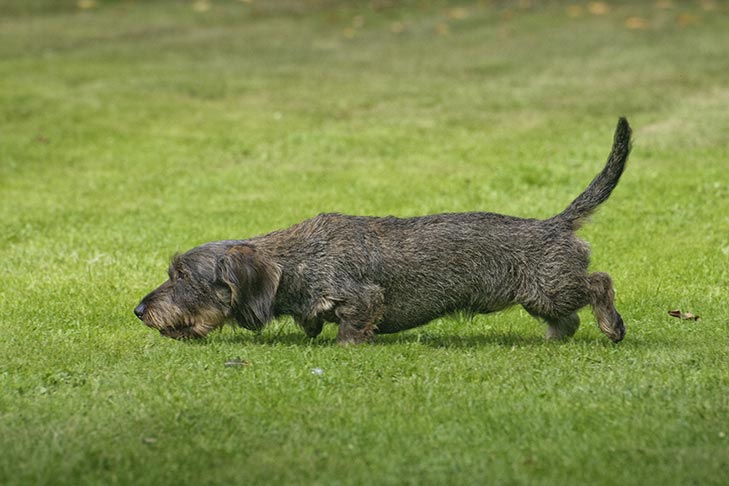
AKC is a participant in affiliate advertising programs designed to provide a means for sites to earn advertising fees by advertising and linking to akc.org. If you purchase a product through this article, we may receive a portion of the sale.
When you let your dog outdoors to take care of business and notice them kicking grass, sand, and dirt behind them, it’s easy to think that the behavior is just a way to keep their area clean. In truth, it’s actually a safety mechanism and an important part of how dogs communicate as a species.
If you notice your dog scraping frantically at the ground or kicking debris behind them, it’s usually an act of marking their territory, formerly known as “scrape behavior.” While you may not always catch your dog in the act, their bodies are busy producing an important chemical reaction that allows them to communicate with other canines.
A Sophisticated Communication Network
Dogs have glands in their paws that release pheromones that trigger social interaction with other dogs. These pheromones from dogs’ feet last longer than the scent of urine or feces, making them more effective as a communication tool.
If you’ve ever sniffed your dogs’ paws, you’ll notice a specific smell that isn’t always a clear sign that they need a bath or grooming appointment. In fact, it’s likely that your pup has recently stimulated the pads on their paws to produce pheromones and spread their “scent.” While these chemical reactions aren’t visible to the human eye, they’re as powerful as putting a mailbox out in front of your house with your last name on it to claim your property.

The behavior dates back thousands of years, to when dogs lived in the wild and were responsible for fending off prey. In the presence of other dogs, the action was used as a protection method. Your dog isn’t attempting to ruin the lawn, but simply letting other dogs know they’re in charge.
But it’s not always a warning to “back-off” — this form of communication also allows canines to alert other dogs that there isn’t a present threat in the area. If another dog comes near, they’ll immediately know that another animal of the same species is close by. When surrounded by other dogs during visits to the dog park, it’s normal for this action to go into overdrive.
When Kicking Becomes a Problem
Dogs kick grass naturally, but they also often perform this behavior on other surfaces like kitchen tile, concrete, the living room carpet, or the sofa. Not only can that result in damage to your property, but it can be especially harmful to your dog if it’s performed repetitively on rough surfaces.
If you observe your pet engaging in this behavior regularly, look for signs of injured paw pads. The pads can become sore, damaged, and could eventually lead to cracking or bleeding. Some paw balms and creams can temporarily provide relief for damaged paws.

It’s also important to take note of when it becomes an aggressive behavior or a sign of anxiety. If your dog has begun kicking at grass more frequently, consider anything that might be contributing to their behavior. It could be a new puppy in your home, a new neighborhood dog, or your dog feeling anxious about something else that has changed recently.
Training to Help Curb the Behavior
Fortunately, if the behavior has become problematic, you can train your dog to learn other coping mechanisms that can help improve their manners and social skills. In Canine Good Citizen (CGC) training, your dog can learn practical skills (such as sit, come, down, and stay) that can be used to manage your dog’s behavior. When your dog is excessively kicking grass, you can instruct them to do an incompatible behavior.
The Canine Good Citizen program is open to purebred and mixed-breed dogs of all ages. There aren’t any limitations on who can participate, but AKC does offer separate training for puppies. AKC S.T.A.R. Puppy teaches the beginning stages of Canine Good Citizen to younger dogs. AKC can help find a CGC evaluator that teaches training and offers testing near you.

